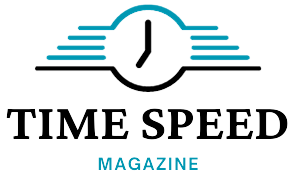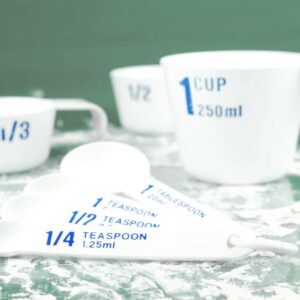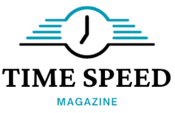What Is A Cup
Guessed that a seemingly ordinary kitchen tool like the cup could possess more significance than merely holding your morning coffee. It doubles up as a fundamental measuring instrument within the US customary system. With its designated symbol, “c”, this vessel accommodates larger quantities of liquid or ingredients compared to spoons, making it indispensable for baking measurements. The Conversions For Teaspoons And Cups.
What Is A Teaspoon
A teaspoon is a classic unit of volume measurement in the US customary system, although the rest of the world follows the metric system. Teaspoons are a third smaller than tablespoons and can be identified with abbreviations like t, ts, tsp, or tsp when measuring ingredients for meals. They are a fundamental tool in the culinary realm.
Understanding Teaspoons And Cups Measurements
Before we delve into the world of conversions, let’s establish a clear comprehension of teaspoons and cups. Teaspoons are used for smaller measurements, often involving ingredients like spices, flavorings, and extracts. Cups, on the other hand, represent larger measurements typically used for liquids, flours, and other bulkier ingredients.
Converting Teaspoons To Cups With Precision
The process of converting teaspoons to cups necessitates accuracy. One tablespoon is equivalent to three teaspoons, and there are 16 tablespoons in a cup. If a recipe calls for 12 teaspoons of an ingredient, divide 12 by 3 to yield 4 tablespoons. Then, divide 4 by 16 to arrive at the measurement of 0.25 cups.
Converting Cups To Teaspoons
When transitioning from cups to teaspoons, the same logical approach is applied in reverse. For instance, if a recipe mandates 1.5 cups of a specific ingredient, begin by converting cups to tablespoons (1.5 x 16 = 24 tablespoons), and subsequently, tablespoons to teaspoons (24 x 3 = 72 teaspoons).
How Many Teaspoons For 1/4 Cup
- When a recipe stipulates 1/4 cup, determining the equivalent in teaspoons is a common query. Accurately, 1/4 cup equates to 12 teaspoons. This means that whenever you require 1/4 cup of sugar or flour, you can confidently visualize it as 12 teaspoons.
- Mastering Measurements: Converting 3/4 Cup to Tablespoons
- For various recipes that involve tablespoon measurements instead of cups, let’s simplify the conversion process. 12 tablespoons comprise 3/4 cups. Therefore, knowing that 1 cup equals 16 tablespoons allows for a seamless conversion from 3/4 cup to tablespoons.
- Consequently, multiplying 3/4 by 16 results in (3/4) * 16 = 12 tablespoons Hence, 12 tablespoons accurately represents 3/4 cup.
A Comprehensive Guide To Conversions Teaspoons To Cups
To thrive as a versatile chef, possessing a firm grasp of conversions is indispensable. Presented below are some standard teaspoon-to-cup conversions to facilitate your culinary journey:
- 1 cup = 48 teaspoons
- 3/4 cup = 36 teaspoons
- 1/2 cup = 24 teaspoons
- 1/3 cup = 16 teaspoons
- 1/4 cup = 12 teaspoons
Memorizing these conversions will undoubtedly save you time and effort in the kitchen.
What Does the 3/4 Cup Represent
Understanding the volume represented by a particular measurement is valuable. In the case of a 3/4 cup, filling a standard measuring cup to this level corresponds to 8 ounces (236.6 milliliters) of liquid. This information proves invaluable when adjusting recipes or altering ingredients.
How Many Tablespoons In 3/4 Cup
Utilizing the previously established conversion factor, determining the number of teaspoons in 3/4 cup is straightforward. Given that 48 teaspoons constitute a cup, the calculation unfolds as follows:
- 1 cup = 48 teaspoons
- 3/4 cup = (3/4) * 48 teaspoons = 36 teaspoons
Ergo, 3/4 cup precisely equals 36 teaspoons.
The Essence Of 3/4 Cup
For achieving the desired outcome in a recipe, comprehending the significance of 3/4 cups is paramount. In many culinary preparations, 3/4 cup represents a typical portion of the whole. Despite not serving as the main foundation of a dish, it often signifies a substantial quantity that can significantly influence the overall flavor and texture.
Effortless Conversion-From 3/4 Cup To Tablespoons
Considering that 12 tablespoons equals 3/4 cup, this conversion proves invaluable when meticulous measurements are required for precision in ingredient quantities.
Navigating Half A Cup
The ubiquitous half-cup measurement also holds significance in cooking. Calculating the number of teaspoons it embodies involves the following conversion factor:
- 1 cup = 48 teaspoons
- 1/2 cup = (1/2) * 48 teaspoons = 24 teaspoons
Hence, half a cup corresponds to 24 teaspoons.
Essential Tips For Accurate Measurement Conversions
To ensure seamless conversions, adhere to these expert tips:
Standardized Measurements
Consistently employ standardized measurements for reliable outcomes.
Double-Check Calculations
Before adding ingredients, verify your calculations to prevent errors.
Quality Measuring Tools
Utilize high-quality measuring cups and spoons for precise measurements.
Maintaining Consistency
Consistency is the cornerstone of successful cooking. Standard measurements enable replication and adjustments.
Leveraging Digital Tools
Digital conversion calculators and mobile apps expedite precise measurements.
Baking Vs. Cooking Conversions
Baking demands accuracy due to chemical reactions while cooking offers more flexibility.
Adaptation And Exploration
Experimenting with various measurements can lead to exciting culinary innovations.
Preserving Ratios
Understanding ingredient ratios is vital for balanced flavors and textures.
Embracing Experimentation
Don’t shy away from experimenting with measurements to create dishes tailored to your palate.
Beginner’s Tips For Successful Cooking And Baking
Cooking and baking offer endless possibilities, even for beginners. By mastering fundamental techniques and fostering curiosity, you can craft delectable and impressive dishes. Here’s where to start:
Setting Up Your Kitchen
A well-organized kitchen, equipped with essential tools like pots, pans, mixing bowls, measuring cups, and utensils, forms the foundation of successful cooking and baking.
Commence With Simplicity
Embark on your culinary journey with recipes featuring a limited number of ingredients and straightforward instructions. Gradually progress to more intricate dishes as your confidence grows.
Embrace Accurate Measurements
Precise measurements are paramount in the culinary world. Invest in measuring spoons, cups, and a kitchen scale to ensure impeccable outcomes.
Prioritize Preparation
The French concept of “mise en place” underscores the significance of preparing and organizing ingredients before cooking. This enhances the overall cooking process.
Explore Flavor Profiles
Experiment with herbs, spices, and seasonings to elevate the taste of your creations. The right seasoning can transform a simple dish into a culinary masterpiece.
Master Knife Skills
Developing proper knife techniques enhances efficiency and safety in the kitchen. Practice chopping, slicing, and dicing to refine your culinary prowess.
Baking Essentials For Novices
Embarking on a baking journey involves understanding key ingredients like flour, sugar, eggs, and leavening agents. Stick to recipes meticulously, as baking hinges on precision. Additionally:
Engage Your Senses
Taste, smell, and visual cues are your allies. Trust your instincts to determine when a dish is perfectly cooked or requires adjustments.
Learning Through Mistakes
Mishaps are part of the learning curve. Embrace errors as opportunities to learn and evolve.
Cultivate Patience And Curiosity
Mastery takes time. Embrace patience while experimenting with recipes, ingredients, and techniques.
Healthier Cooking Alternatives
Explore healthier cooking methods and ingredient substitutions to craft nutritious meals that don’t compromise on taste.
Avoiding Common Measuring Errors In The Kitchen
Accuracy in measurements is the bedrock of culinary success. To enhance your culinary creations, steer clear of these common measuring errors:
Appropriate Measuring Tools
Use designated measuring tools for liquids and dry ingredients to ensure accurate results.
Distinguishing Liquid And Dry Measurements
Liquid and dry ingredients require distinct measuring techniques. Employ the “scoop and sweep” method for dry ingredients and measure liquids at eye level.
Sifting Flour Wisely
While sifting flour can improve accuracy, it’s not always necessary. Follow recipe instructions for optimal results.
Pack Brown Sugar Right
Gently pack brown sugar into the measuring cup and level it for precise measurements.
Perfect Spice Precision
Spices impact flavor, so precise measurement is key. Use small measuring spoons and level off with a flat edge.
Avoid Overcrowding
Measuring small ingredients like chopped herbs in a cup can lead to inaccuracies. Use smaller measuring spoons or opt for a “pinch” measurement.
Respect Measurement Conversions
Ignoring conversions can alter ratios, affecting your dish’s texture and taste.
Mind Ingredient Temperatures
Some ingredients change volume based on temperature. Use softened butter for recipes that require it.
Avoid Shaking Ingredients
Shaking the cup when measuring flour or sugar leads to uneven packing. Use a gentle touch for consistent measurements.
Precise Measurements Always
Estimating measurements can lead to inconsistent results. Always measure accurately for reliable outcomes.
The Right Way To Measure Dry Ingredients
For accurate measurements of dry ingredients like flour, sugar, or cocoa powder, follow these steps:
- Fluff the Ingredient: Stir the ingredient with a spoon to loosen it.
- Careful Scooping: Gently scoop the ingredients into the measuring cup.
- Leveling Off: Use a flat edge to level off the top and remove excess.
Conclusion
Mastery of conversions between teaspoons and cups is an essential skill for every cook. These conversions ensure your recipes achieve the desired taste and texture. Remember, precision is crucial, and consistent measurements are the key to consistent success in the kitchen. The Conversions For Teaspoons And Cups. Explore the Excellence: Visit Our Website Time Speed Magazine Today!
FAQs
Can I Use A Regular Cup For Measuring Ingredients?
It’s best to use standardized measuring cups and spoons to ensure accurate measurements. Regular cups may vary in size.
Is It Okay To Eyeball Seasoning Measurements?
Eyeballing can lead to imbalanced flavors. It’s better to use measuring spoons for precise seasoning.
Can I Skip Sifting Flour If A Recipe Doesn’t Specify It?
If a recipe doesn’t call for sifted flour, you can skip this step. However, sifting can contribute to a smoother texture.
Are There Measuring Tools Specifically For Small Quantities?
Yes, there are measuring spoons designed for measuring small quantities of ingredients like spices and extracts.
Is It Necessary To Cook With Exact Measurements?
Yes, accurate measures are essential to getting consistent results, especially while baking.
If A Recipe Calls For Cups, May I Use Teaspoons Instead?
It is possible, but you must use caution when measuring to keep the right proportion of ingredients.


